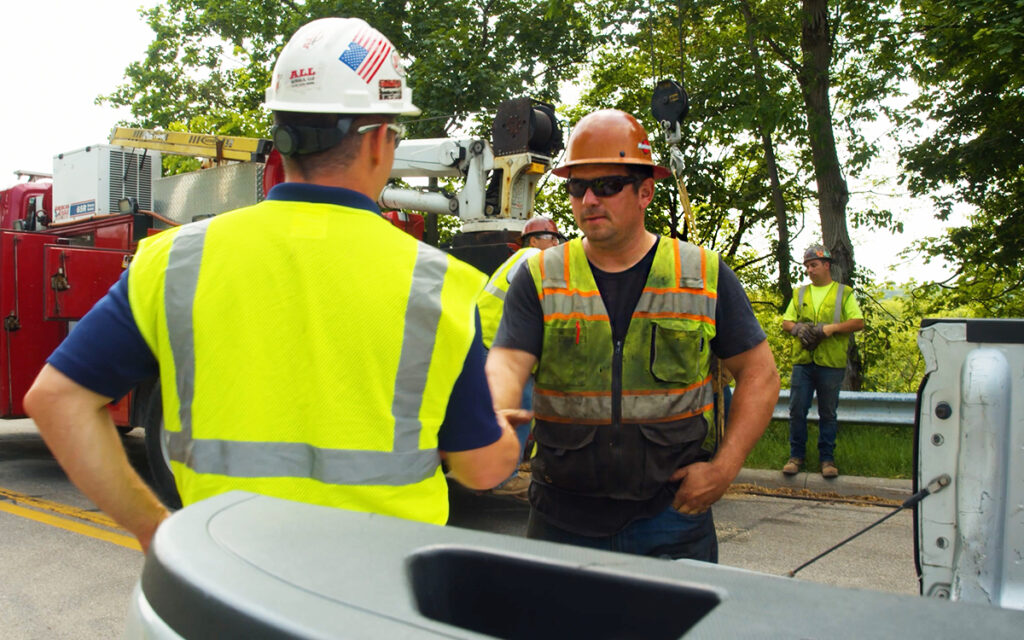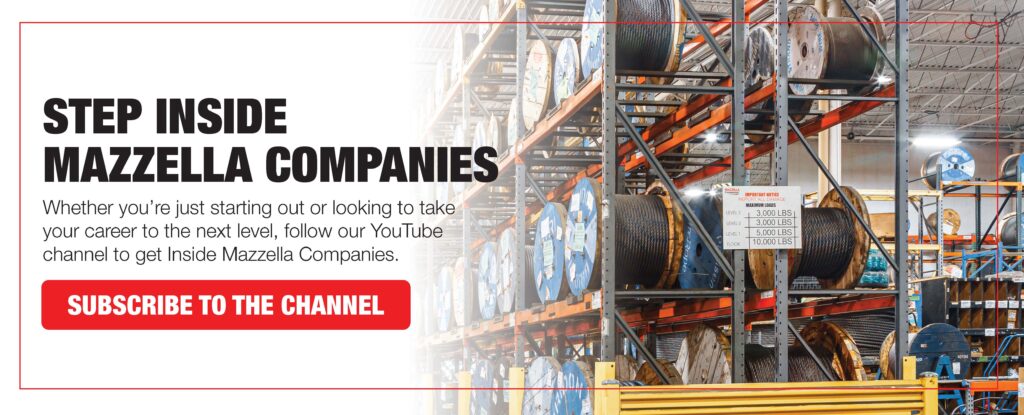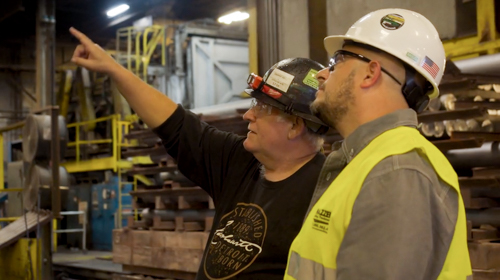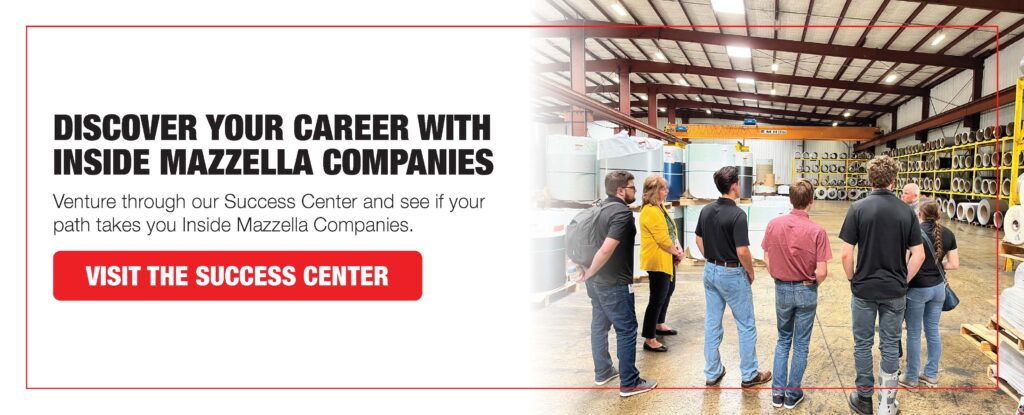In sales and customer service, communication is critical to success. However, communication is not one-size-fits-all. Different situations can arise that may require different modes of communication, such as in-person or virtual meetings.
In this article, we sat down with some of Mazzella Companies’ Sales Specialists, Justin Yoke, Account Manager, Jon Lehn, Account Manager, and Jon Libava, Region Sales Manager-East, to discuss the top differences and advantages between the two.
1. Efficiency
Part of exceptional customer service is meeting customers where they are and providing solutions to their problems. As a multi-faceted company with a nationwide presence, Mazzella Companies focuses on efficiently tackling multi-faceted customer needs.
Addressing the physical space that can sometimes be placed between customers and Mazzella Companies can sometimes be efficiently and effectively solved with virtual meetings.
Justin says, “I cover pretty much the whole state of West Virginia and also parts of Virginia, Kentucky, and Ohio. With such a large territory, virtual meetings give me the opportunity to cover that area more efficiently than traveling. Having the option to do virtual meetings has allowed me to have ten meaningful, substantial meetings a day from two, and I am still going to free up time to check emails and other administrative work. In short, a 30-minute meeting could save us both 12 hours.”
Jon Lehn said that a meeting he’ll typically only do virtually is when he’s qualifying a customer. “We’ll use a virtual meeting on a potential project, and then once we all decide to move forward, we’ll come out and get things quoted. There is only so much you can do over the phone.”
Justin said that while he’s drawn to a virtual meeting when it saves time for the customer, he understands that it’s so much more than just coverage. “Our industry is unique. There are situations in which an in-person meeting is essential. Working out crane specifications requires a hands-on approach because the tolerances are minimal.”
Justin went on to share that the product itself often plays a part in his decision to meet virtually or in person. “I’m a proponent of synthetic rigging and new materials, especially for dangerous environments like underground mining. I feel that if I’m advocating for these materials, it will go much better if I can get their hands on the materials. So, in any situation where I think the customer or client would benefit from seeing and feeling something I talk about, I will present that in person.”
Being based out of Cincinnati with business unit managers in Cleveland, Jon Lehn has grown comfortable doing either virtual or in-person. Still, the virtual meetings have helped him be more efficient. “Having the option to do a virtual meeting on Zoom makes getting the people from Cleveland involved easier. No one wants to drive eight hours to look over an application, but they always want to help. Those virtual meetings help us get a lot accomplished together.”
Jon Lehn shared that having the option and choosing wisely has positively affected his sales. “I have a customer right now in Arizona with whom I have a call after this interview. Traveling out there as often as we would need to communicate would get expensive, so I think it’s really enhanced my performance because I can give that customer the extra time.”
Jon Libava shared that it comes down to serving the customers where they are. “Virtually is sometimes the only way decision-makers can meet. I was with a contractor in North Dakota who had a conflict, and they couldn’t get there. The only way we could meet was virtually, which was very successful. We had other decision-makers able to remote in from Minnesota, too. I think those were as successful as they could be. I think they work when they make sense because sometimes in-person won’t work logistically.”

2. Accessibility
Accessibility goes beyond efficiency, enhancing customer engagement by providing multiple ways to interact and communicate. Accessibility could be affected by internet connections, technological savviness, or even health.
Justin said the COVID-19 pandemic catalyzed his increase in virtual meetings, enhancing his customer’s access to that communication. “It really opened up not just my eyes but also my manager’s. Until that point, I was really pushed to be in person all the time, but I soon realized I could do things from my home office just as well.”
Jon Lehn has been a part of Mazzella Companies since 2017 and says every year, he feels like more and more virtual meetings are being held. “They really took off after COVID-19, but there really has been a build-up.”
Jon Libava shared that while he prefers to conduct in-person meetings, virtual meetings helped bridge communication gaps during the pandemic. “During COVID-19, we had some success with a few larger companies that had staff on-site in the office.”
While public health concerns made virtual meetings the norm, internet connectivity can sometimes create its own set of problems. Poor connection quality could cause sound distortion or low signal strength, requiring users to turn off their cameras. This could lead to further division.
Justin said that connectivity can sometimes be an issue when he conducts virtual meetings, but not as much as one might think. “Usually, the clients I’m talking to have some sort of satellite or Wi-Fi.”
When talking about the transcription capabilities of Teams, Justin mentioned how helpful that could be to him if the connection isn’t perfect. “That transcription could be invaluable when discussing a complicated solution with several measurements.”
Jon Lehn said that for him, being able to share screens helps make information readily available to customers. “I have a purchase order with a customer right now. Microsoft Teams meetings have allowed me to review drawings and photos with the customer without a drive.”
Jon Libava said that while he doesn’t prefer in-person over virtual meetings for accessibility, it’s all about the customer’s preferences. “Most of my customer base is built on contractors and small businesspeople. They’re not sitting at their desk throughout the day – they’re moving targets. They may only stop into the office first thing in the morning to get their crews out, but then they’re out in the field. It can be difficult to get them on a virtual meeting. The other challenge is that not everyone is technologically savvy.”

3. Connection
Connection is the process of building a strong relationship with your customers. When you connect with your customers, you better understand what they value. When you better understand what they value, you can help them achieve their goals, aiding your success as a brand advocate.
Jon Libava said meeting in person helps him better understand the situation. “They’re a superior way to understand their business. They might be working out of their garage, which is fine, but we might miss out on the fact that they have a huge facility because we’ve never been there.”
When it comes to future success, Jon Libava feels that in-person meetings are the key to relationship building when it’s a must. “I think there are certainly valid reasons and cases where virtual meetings make sense, but I think one of the differentiators at Sheffield Metals, what sets us apart from competitors, is that we have a ton of face time. It’s that five-minute face-to-face interaction, being able to look a person in the eye, shake their hand, read their body language, and ultimately better understand their business and who the other players are.”
Justin echoed that sentiment, sharing that sometimes a virtual meeting cannot replace an in-person meeting. “There’s so much to be found in nonverbal and body language. Especially when you’re presenting a substantial proposal.”
Some fear that it’s hard to stay engaged without being in person. Justin said that he keeps virtual meetings personal and captivating by recreating the same meeting he’d conduct in person, virtually. “I try to be the same person in both situations. I’m always trying to be personable and talk with them about their likes and dislikes. I don’t want every minute of the meeting to feel scheduled just because we’re on a computer screen.”
Jon Lehn said virtual meetings have improved his connections with others, even without that physical presence. “When I’m talking about a drawing with a customer, having that drawing up on the screen enhances our connection.”
Jon Libava said having more in-person meetings benefits him and his team. “Most of our competitors aren’t prioritizing these face-to-face meetings, proving they’re a difference maker, especially if something has gone wrong. We want to be able to look them in the eye, take responsibility for whatever we may have done, and get it figured out. We could always do that virtually, but in-person is more effective. We prioritize seeing them physically. We encourage our Representatives to do whatever travel is necessary to meet their customers face to face, and we want customers and clients to see that.”

4. Distractions
Distractions can lower the quality of communication, causing misunderstandings, errors, and frustrations that can negatively affect the sales process and, therefore, relationships you’ve built over time.
While many feel that virtual meetings can devolve into a distraction, Jon Lehn’s experience has been in contrast. “I sometimes feel that in-person visits can be more disruptive. With a virtual meeting, there’s no traffic to deal with, so meetings always start on time, and you can get to the point. I can get a lot done on a half-hour Teams call.”
Jon Lehn elaborated on that thought, saying, “I think when you have a virtual meeting, you usually have someone’s attention captured. They’re usually in their office, and the door is closed. When you’re walking around the shop with them, there’s always ancillary noise, which I think can be a drawback when you’re trying to paint a picture.”
When conducting a distraction-free meeting, in-person or virtual, Jon Libava said it’s all about setting expectations first. “I’ll always make sure to thank everyone for their time because I know it’s usually tough for everyone to get together, and I’ll let them know that I want to make the most of our time together. I’ll let them know I’m turning my phone on vibrate because if not, I’ll interrupt the whole time, and we can then all agree to put everything to the side for our time together.”
Jon Libava went on to share another way to preemptively avoid distractions, especially in a virtual meeting, saying, “If I know I’m going to be on a virtual meeting with someone that is going to be surrounded by their direct reports, I’ll ask ahead of time to remind everyone to help limit distractions for at least our 30 minutes together.”
Striking a Balance
In a post-pandemic and fast-paced business world, we have all come to realize the importance of efficient, accessible, distraction-free communication that builds on connection, whether that’s through meeting in a physical or virtual space. While many have different opinions on which space creates the best customer experience, striking a balance between the two by meeting your customers when, where, and how they need to be met should always be top priority.

